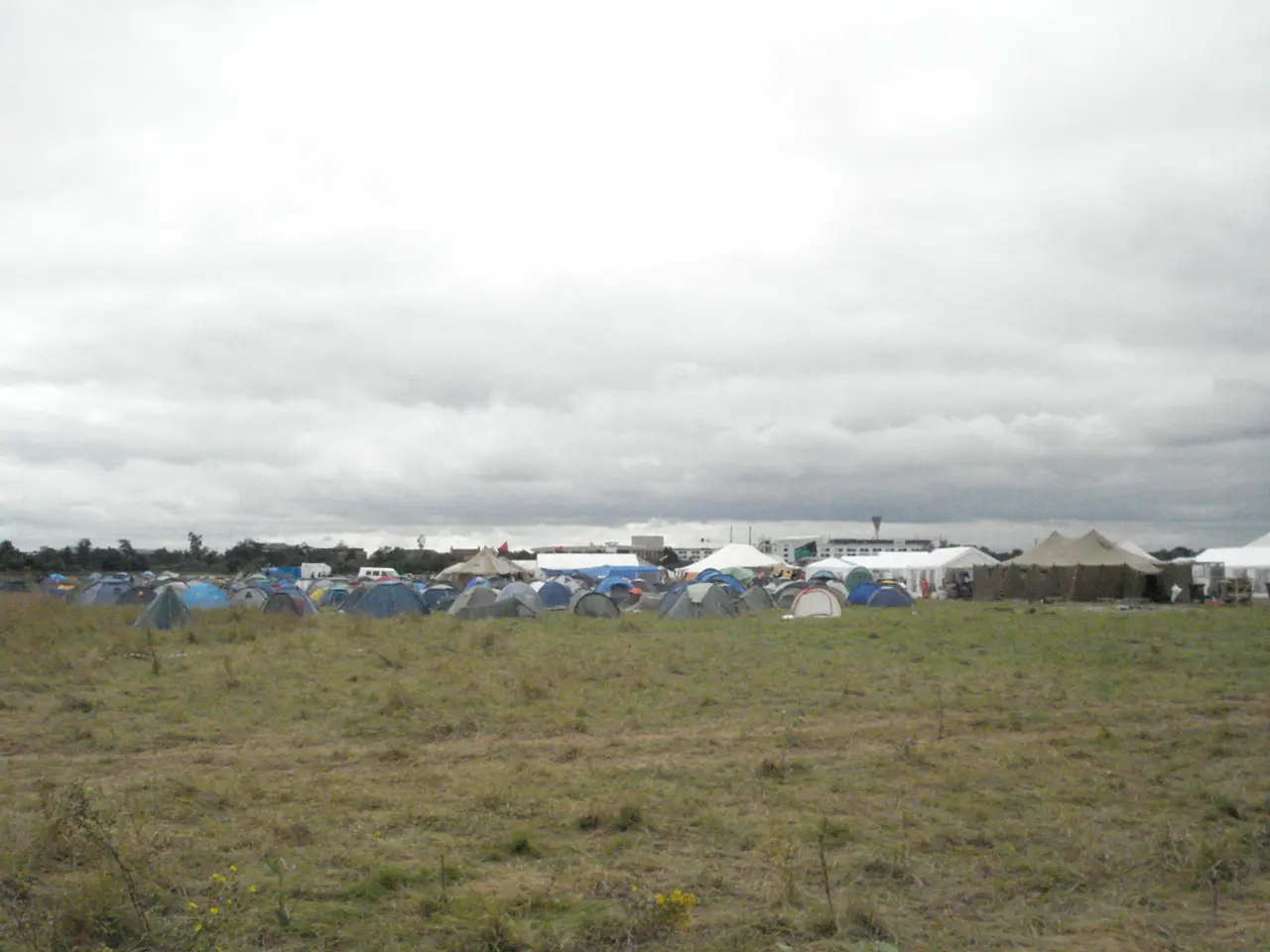Prepare for a safe camping adventure with our comprehensive safety guide for tents and campers.
Camping in Germany during summer can be an enjoyable experience, but it's essential to be prepared for sudden thunderstorms. Here's a guide on how to safely prepare, find shelter, and respond after a thunderstorm.
**Preparing for Thunderstorms**
1. **Monitor Weather Forecasts**: Always check the local weather forecast before heading out. Reliable services like the Deutscher Wetterdienst (DWD) provide updated forecasts.
2. **Pack Essential Gear**: Include a waterproof tent, rain gear, and warm clothing. A portable shelter or a vehicle can also serve as a backup plan.
3. **Choose Safe Campsites**: Opt for campsites that are not prone to flooding and are away from tall trees, power lines, and metal structures, which can attract lightning.
**Finding Shelter**
1. **Avoid Open Areas**: Stay away from open fields and hilltops, as these are more susceptible to lightning strikes.
2. **Seek Low-Lying Areas**: Look for low-lying areas or valleys if possible, but ensure they are not prone to flooding.
3. **Use Vehicles or Buildings**: If you have access to a vehicle or a building, use it as a safe shelter. If you are in a tent, consider moving to a safer location.
4. **Avoid Metal**: Refrain from being near metal structures like fences, bridges, or metal-roofed cabins during a thunderstorm.
**Responding During a Thunderstorm**
1. **The 30-30 Rule**: When you see lightning, count until you hear thunder. If it's 30 seconds or less, the storm is within 6 miles and is dangerous. Seek shelter immediately and wait at least 30 minutes after the last lightning flash before leaving shelter.
2. **Stay Informed**: Keep a radio or a phone with you to receive updates on the storm's progress.
3. **Avoid Water**: Stay away from bodies of water, as they can conduct electricity if lightning strikes nearby.
**Post-Storm Safety**
1. **Assess Damage**: Check your campsite for any damage or hazards after the storm has passed.
2. **Avoid Flooded Areas**: Be cautious of flooded areas, as they may be contaminated or have hidden hazards.
3. **Check for Injuries**: If anyone is injured during the storm, provide first aid and seek medical help if necessary.
4. **Plan for Recovery**: If your campsite is severely affected, plan for alternative accommodations or a return trip when the weather improves.
In the event of a lightning strike, bring the victim out of the immediate danger zone, alert the rescue service, check consciousness and breathing, keep the victim warm, and cool visible burns with water.
Remember, a regular camping tent does not protect against a lightning strike, and the metal frame can even attract lightning. Vehicles with a continuous metal body, such as box vans, camper vans, and many semi-integrated motorhomes, offer high levels of lightning protection. A vehicle with a closed metal hull is an extremely safe place during a thunderstorm due to the Faraday cage effect.
To navigate thunderstorms safely, download a reliable weather warning app, such as WarnWetter, NINA, or KATWARN. These apps offer official weather alerts and detailed weather maps. The DWD's WarnWetter app offers additional features like radar, lightning tracking, and warnings on a municipal level.
By following these steps, you can minimize risks and ensure a safe camping experience in Germany during thunderstorms. Preparation before the storm is key to safety. If a warning is issued or the sky darkens, secure your campsite by tightening guy lines, retracting awnings, stowing away loose items, and battening down the hatches. In the event of flooding, close the awning or pop-up roof, keep your head away from the roof area, and prefer the driver's cabin.
A well-equipped travel first aid kit is invaluable when camping, including standard first aid items, medications, emergency gear, repairs, and additions for inclement weather. Always remember to stay informed, stay safe, and enjoy your camping trip in Germany.
- In addition to monitoring weather forecasts, it is also beneficial for campers to be aware of weather-forecasting services during their outdoor-living expedition, as they can provide updates on unexpected weather changes, such as thunderstorms.
- To complement a waterproof tent for any home-and-garden setup, campers may consider adopting a lifestyle that encourages the use of additional weather-resistant gear, like rain gear and warm clothing, for a safer and more comfortable camping experience.
- By recognizing the impact of local weather conditions on the campsite location, campers can make deliberate choices to select sites that offer minimal risks for thunderstorms, such as avoiding areas prone to flooding or staying away from tall trees, power lines, and metal structures.








